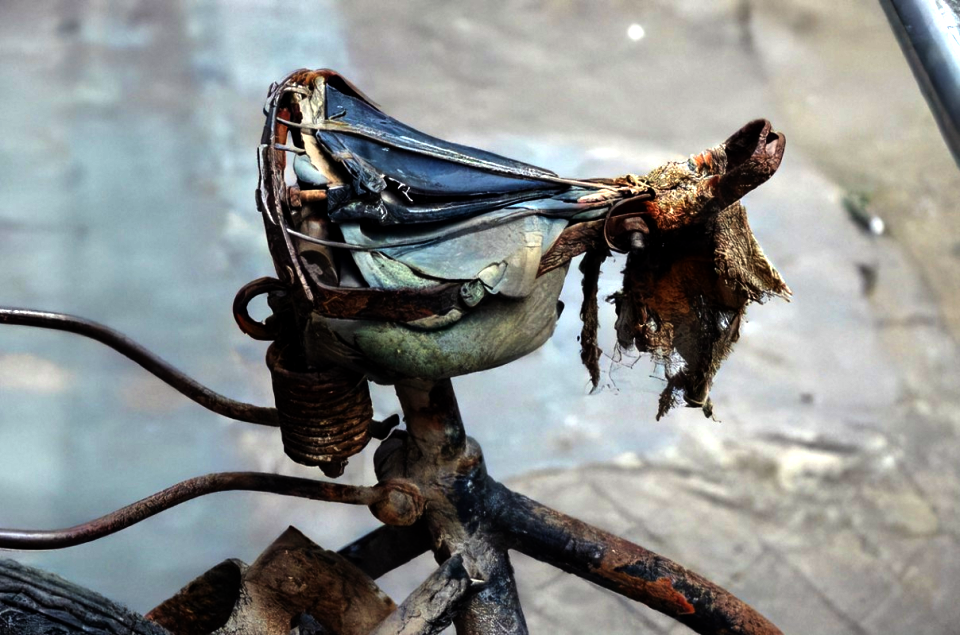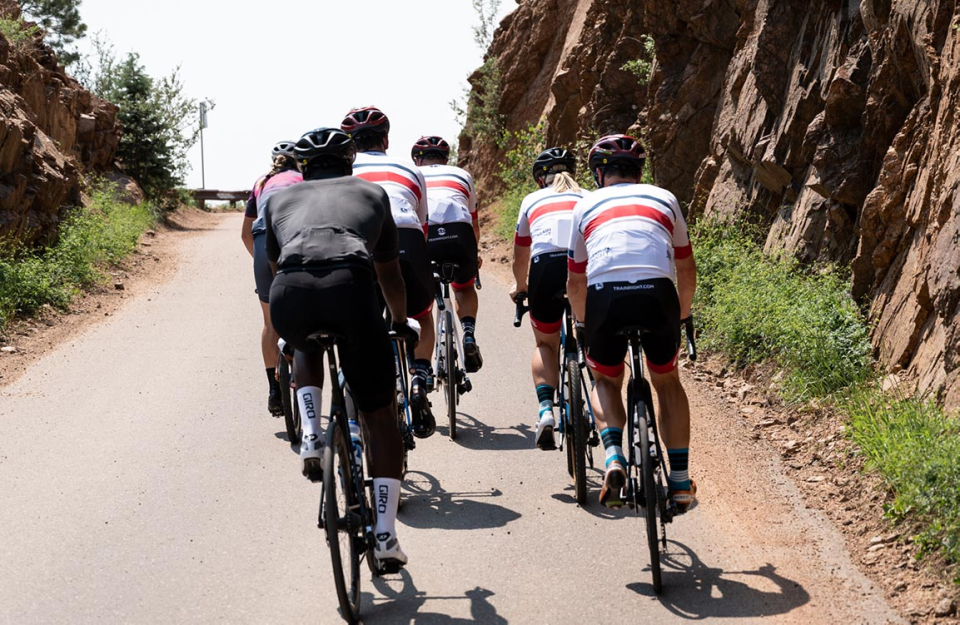How to Prevent and Treat Saddle Sores
Nothing ruins a great ride faster than discomfort caused by friction or pressure between you and your saddle!

There’s a lot going on in your shorts: pressure from supporting a substantial portion of your bodyweight, heat and moisture from exertion and sweat, and friction from spinning your legs and scooting fore and aft on the saddle. Keeping your skin healthy can be a challenge, so here’s what you can do to prevent and treat chafing and saddle sores, and to keep your skin happy.
What is a saddle sore?
A saddle sore is typically caused by continuous pressure and friction from your saddle. This causes damage to the skin that allows a place for bacteria to get in and flourish. Then, a sore manifests as a raised, pink or red area of skin. It may look like a pimple or ingrown hair and contain liquid. Some feel like a cyst or marble under the skin. Another common form of a saddle sore results from chafing that abrades skin and may look like a rash.
What does a saddle sore feel like?
Saddle sores are painful to the touch, even off the bike. And because sores often develop where there is pressure, they can be extremely painful on the bike. This can lead cyclists to alter their riding position to alleviate the pain, which can hinder performance and even cause new sores.
How to treat saddle sores
To treat the occasional saddle sore, a few days off the bike is often all it takes for the inflammation to go down and for the skin to heal. During that time, try to keep the area cool and dry by wearing loose fitting clothing and/or sleeping with no clothing. If the skin is broken, take steps to prevent infection, including washing with soap and water and applying an antibiotic ointment.
Similarly, to treat chafed skin, wear loose fitting clothing to prevent further friction and allow your skin to breathe. Keep the area clean with soap and water to prevent infection. If either a saddle sore or area of chafed skin does get infected, it’s time to visit a doctor. Infections further weaken larger areas of tissue, so you want to act quickly if you’re experiencing symptoms of an infection, which include increasing levels of pain and redness, a fever or chills, and the presence of pus.

Hygiene habits to prevent saddle sores
Taking good care of your skin is one of the best ways to prevent saddle sores. Skin can be damaged by exposure to either too much or too little moisture. If you live in a dry climate, you may consider using moisturizer in this area. If you live in a humid environment, consider loose fitting and/or moisture wicking clothing.
Hair removal is a personal decision and may affect the development of saddle sores differently for individuals. Reducing friction is thought to be one purpose for pubic hair, but some cyclists feel it increases chafing. And keep in mind, hair removal methods can cause skin damage that increases opportunities for bacteria to thrive.
Causes and Remedies for Recurring Saddle Sores
Almost every cyclist experiences a saddle sore or chafed skin every once in a while, and typically they go away in a few days. If you are having recurring problems with the skin on your rear end, crotch, or inner thighs, it’s time to find and fix the source of the problem. The following are some of the common causes and remedies for recurring skin issues in cycling.
Your bike fit:
How you sit on the saddle contributes to the amount of pressure you put on different parts of your anatomy. For instance, an upright cycling position might place more pressure on your ‘sit bones’ (ischial tuberosities). A more aggressive, forward-rotated position may put more pressure on the perineum. Saddle height, angle, and fore-aft position can all affect the amount and location of pressure and friction. Bike fit is always a compromise between comfort, aerodynamics, and power production. If your position on the bike causes chafing and saddle sores, your aerodynamics and power production will almost certainly suffer.
Your cycling shorts:
The construction, fit, and condition of your cycling shorts can make a big difference for your skin. If your shorts are too large or they’ve worn out and become looser, bunched fabric can cause chafing. Sometimes the seams connecting the panels are in places that irritate your skin. And keep in mind that chamois–the pad that sits between your body and the saddle–come in different shapes, sizes, and thicknesses. Finding the chamois that matches your anatomy and style of riding can make cycling much more comfortable.
Your saddle:
Finding the perfect width, shape, and padding for your saddle can feel like Goldilocks looking for the bed she liked best. Some will be too wide or narrow, too flat or curvy, and too soft or hard. A saddle that’s too wide can contribute to chafing, as can the shape of the saddle as it widens from the nose to the rear. The curvature of the saddle can lead to pressure points that contribute to the formation of saddle cores. Even the level of padding is highly personal. Some riders prefer a more cushioned saddle while others do better with a firmer perch. Also remember that saddles wear out. They eventually start to sag in the middle, the padding breaks down, and the rails can bend from impacts.
Friction:
Problems with your shorts and saddle lead to problems with friction. The constant rubbing of skin-fabric-saddle irritates and eventually wears away enough skin to cause an abrasion. A lubricating anti-chafe cream, also known as chamois cream, can help reduce friction and protect your skin. Some people swear by chamois cream and others feel no need for it. Similarly, there are differences between chamois cream brands and ingredients. Many chamois creams contain antibacterial ingredients. Some have ingredients that cause a tingly or cooling sensation. Women-specific chamois creams are often formulated with a lower pH.
Your post-ride habits:
There’s a tongue-in-cheek saying among veteran cyclists that “chamois time is training time”, meaning you’re still training as long as you’re in your cycling kit–even if you’re sitting at the café. The problem is, if you already have the beginnings of a skin issue, staying in your cycling shorts longer than necessary will make it worse. It is better to get out of your kit sooner, either to take a shower or, if you are at an event and can’t shower immediately, clean your skin with wipes and get dressed in loose fitting clothes. If your skin is irritated, consider applying ointment.
FREE 14 DAY MEMBERSHIP TRIAL
Gran Fondo Guide fans, click on the image above and get TrainRight Membership for a 14 day no obligation trial. TrainRight Membership comes with a 30-day money-back guarantee!
Troubleshooting Saddle Sores for New Cyclists
For athletes new to cycling, it takes some time to condition your skin to the pressure and friction inherent in sitting on a bicycle saddle. Your sit bones may feel sore temporarily as you adapt. This even happens to experienced cyclists after a prolonged period off the bike. If you are new to cycling and padded cycling shorts, they are meant to be worn directly on the skin (no underwear). Visit your bike shop or a bike fit professional to start out with a neutral, balanced position on the bike. They may have tools to help you find the recommended saddle width for your anatomy, too. You may need to experiment with a few saddle shapes to determine what works best for you.
Troubleshooting Saddle Sores for Experienced Cyclists
If you have been riding comfortably for years and start experiencing saddle sores and chafing, the first thing to do is think about what might have changed over the past few months.
- Are your shorts or saddle finally worn out?
- Did your saddle move, either purposely or accidentally?
- Did you handlebars or brake hoods move? Changes in reach or bar height can lead you to change the angle of your pelvis relative to the saddle or the fore-aft position that feels comfortable.
- Are you sitting on the bike differently due to an injury?
- Did you change laundry detergent?
- Has the weather changed significantly, or did you move to a different climate?
- Are you riding more indoors? Your shorts are likely to be more sweat soaked than during outdoor rides, and the rigid position of the bike can change or exacerbate pressure points.
- Saddle sores and chafing can be frustrating and painful, but they are temporary problems that can be solved relatively easily. It’s definitely worth the effort, because cycling shouldn’t be a pain in the rear.
About CTS
As it has since 2000, Carmichael Training Systems leads the endurance coaching industry with proven and innovative products, services, and content. And the results speak for themselves; no other coaching company produces more champions, in such a wide variety of sports and age groups, than CTS.
For more information, please visit: https://trainright.com

